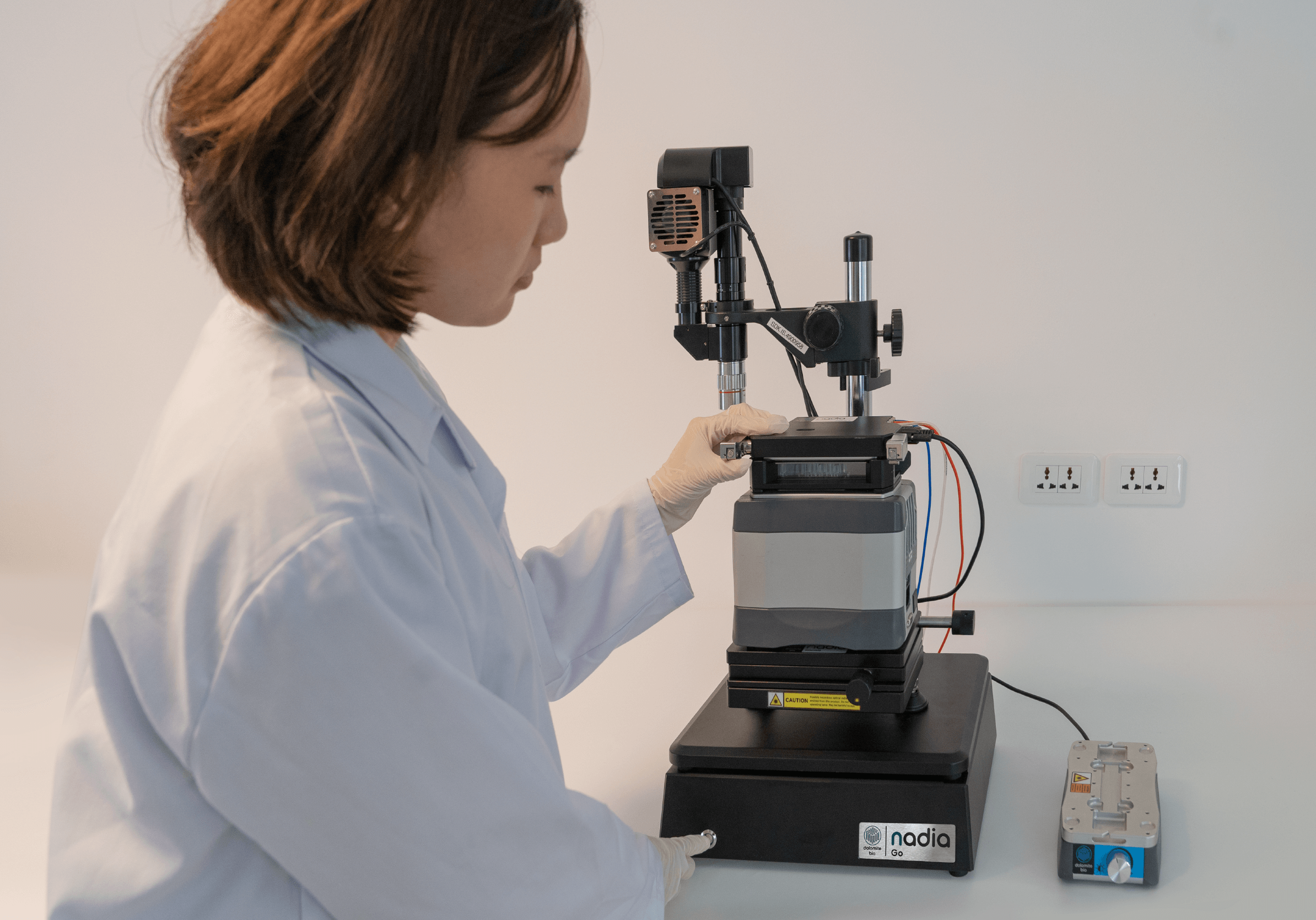The Nadia Go – an open microfluidic system
We are pleased to announce the new addition to the Nadia product family—The Nadia Go, which will combine the benefits of both the Nadia Instrument and Nadia Innovate. A single instrument, but with double the benefits!
Dolomite Bio’s key products are the Nadia Instrument and the Nadia Innovate. The new Nadia Go enables access to the custom microfluidic features of the Nadia Innovate without the capital expenditure needed for the full Nadia Platform.
From Modular microfluidic systems to the Nadia product family
In the 30 years since its emergence, microfluidics has progressed significantly in both scientific research and industry with labs working in a variety of research fields now developing and using their own microfluidic systems. These are often modular, involving lots of tube cutting, connections, etc, which can be unreliable or fail completely. The concept of modular systems such as the µEncapsulator Systems by Dolomite Microfluidics is useful for encapsulation of hydrogels and formation of double emulsions and these are some of the most reliable methods in these application areas. However, biologists focusing on these applications may avoid modular microfluidic systems because the setup is complicated to use.
The Nadia Instrument and Innovate system overcome these issues, allowing protocol development without a complicated setup. However, where budgets are limited, or researchers wish to develop their own “-seq” method, without the multi-lane capacity of the Nadia Instrument, the Nadia Go offers the flexibility without the cost of the full platform.
Giving you the best of both worlds:
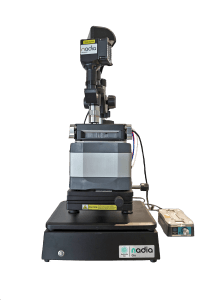
The aim behind the development of the Nadia Go was to combine low cost, easy setup, and the Nadia protocol development features into a single instrument. It essentially combines the flexibility trait of the Nadia Innovate and the affordability trait of the Nadia Instrument.
Affordability with Nadia Go:
Cost can often be a big factor in hindering the progress of research projects. Therefore, we have removed the need to purchase both a Nadia Instrument and Nadia Innovate for users who wish to develop custom workflows only. When working with cells, there is no ‘one-size-fits-all’ and therefore having the ability to develop your own protocol to fit the requirements of your sample and reagents is crucial for obtaining a good result. With the Nadia Go, you can now do this with ~50% of the cost of purchasing a Nadia Instrument and Nadia Innovate.
Smaller Instrument footprint:
The messy parts of the hardware are kept inside a box making the system more compact compared to most modular systems. The Nadia Go uses a separate air compressor box for delivering compressed air to the instrument instead of utilizing the pressure system from the Nadia Instrument, reducing the footprint of this system so it sits neatly beneath the Nadia Innovate.
Easy to use:
The system is designed so that no microfluidic expertise required. The system components connect to a PC and is very much a ‘plug-and-play’ system. Researchers load the system with micropipettes and priming of channels and droplet formation are automated through easy-to-use software. There is no need for working with complicated tube connections or replacements, etc. Consumable parts such as microfluidic chips are single use plastic that don’t require cleaning. As a result, there are no wetted instrument parts, so maintenance of the Nadia Go becomes unnecessary.
Play as you Go:
There are 4 features on the Nadia Go which can be adjusted to produce a customized workflow:
Pressure:

The ability to control and maintain stable flow rate is critical for obtaining reproducible results. Plant protoplasts, for instance, are typically cultured in more viscous buffers with high osmolyte content and therefore may need protocol adjustments to accommodate the high viscosity to be able to produce monodisperse droplets. Agarose would also require a pressure increase to flow adequately.
Temperature:

Temperature requirements at various steps of the protocol can vary depending on the experimental needs. During the run, the temperature is kept at 4°C to maintain the transcriptome state of cells, however for applications like producing agarose spheroids, the system would need to be set to 37°C to keep the agarose molten.
Therefore, the Nadia Go gives you control over the temperature setting at various stages of the protocol.
Time:
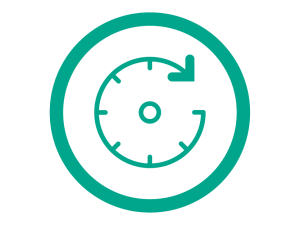
Just like temperature, timing may also vary between the different protocol steps. As an example, different applications can require different incubation periods.
Stirring:

During a single-cell experiment, both cells and beads should be kept in suspension to prevent blockages. During a run with hydrogels like agarose, stirring can help prevent the hydrogels from solidifying. Therefore, on the Nadia Go, stirring of cells and beads can be controlled individually via a proprietary stirring design.
Different bead types require different stirring parameters as they may settle at different speeds or may be more or less fragile due to their different properties. Cells on the Nadia Go system are typically stirred at 75 rpm, but fragile cells may require even less stirring.
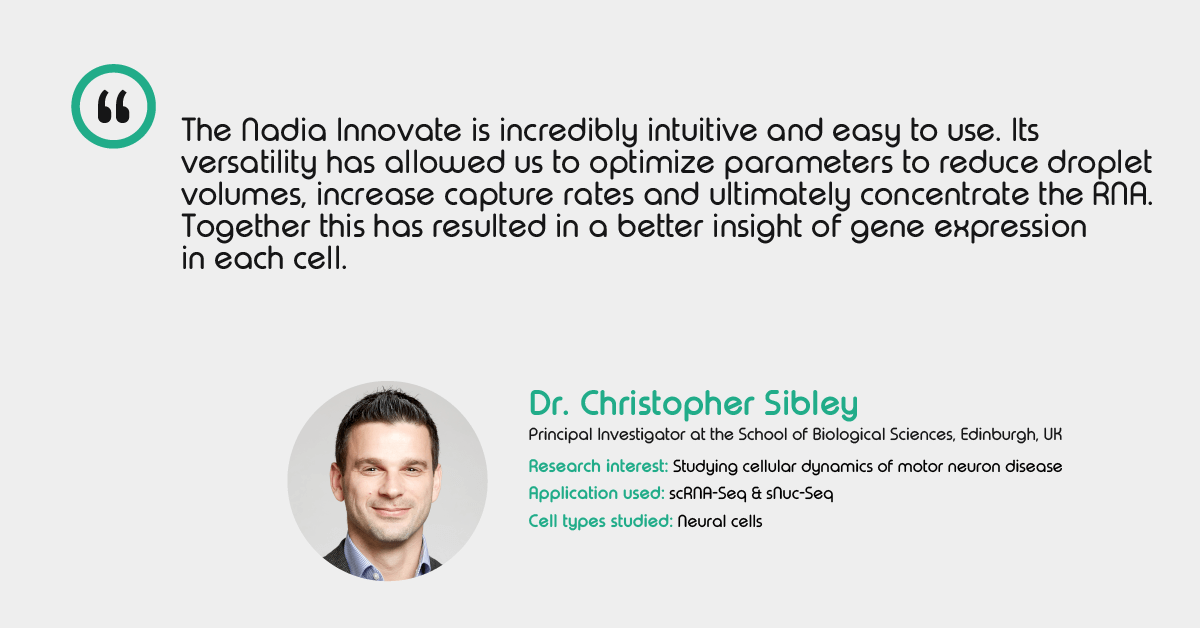
Are you struggling with your modular microfluidics setup? Do you wish you had a more reliable and consistent solution for your microfluidic requirements and reassurance from being able to visualize the droplet forming process? The Nadia product family has it all covered.
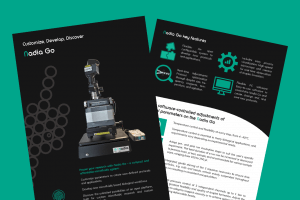

Learn more about customization
Customizing single cell research protocols with Nadia Innovate

